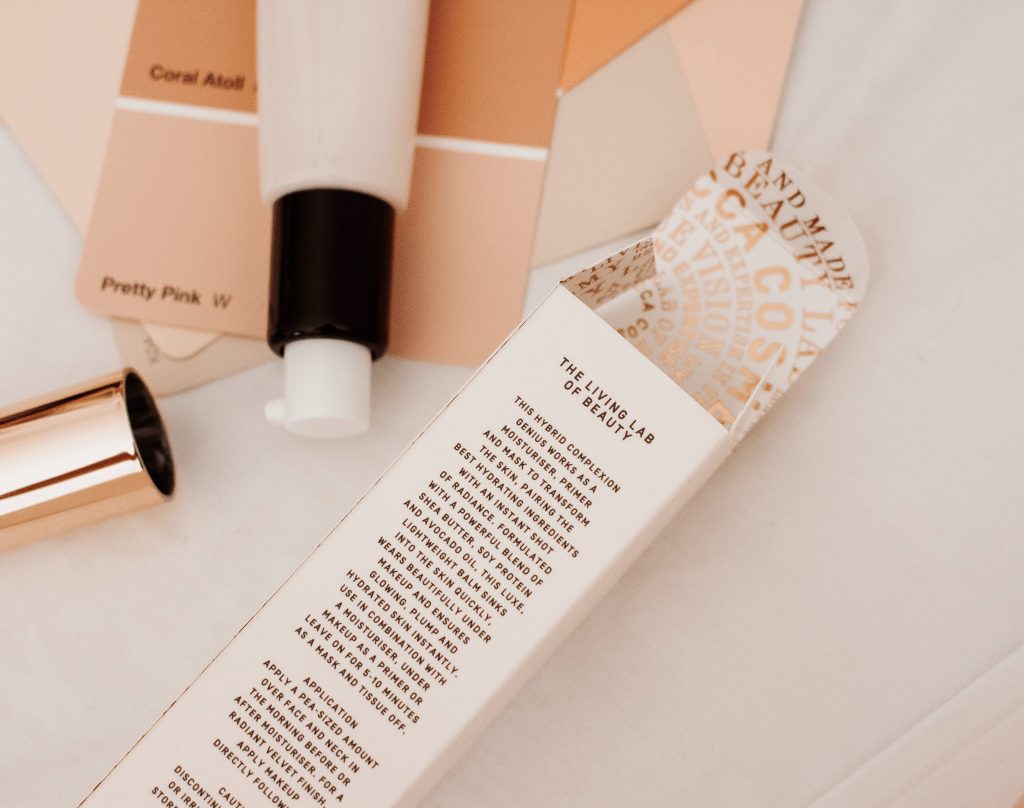Setting up your business legally isn’t the most glamorous part of launching your beauty brand, but it’s very important!
You’ll need to choose the right legal structure for your business, apply for an EIN, and secure the right licenses.
It might sound overwhelming at first, but with a little bit of thought and research, you can rest easy knowing that you have your legal bases covered!
Read on to find out how to legally establish your beauty business.
(Please note that I am not an attorney or an accountant, and the information shared here is based on the experience and research I’ve done in my more than 10 years in business.)
Which Legal Structure Should You Choose?
The first legal step you need to take is to set up your legal structure. The options include sole proprietorships, LLCs, general partnerships, and corporations.
Each legal structure has advantages—there isn’t necessarily one “best” choice. You’ll have to weigh out the choices and decide which makes the most sense for you and your business.
Sole Proprietorship
Your first option is a sole proprietorship, where you and your business are legally considered the same. That means that any income you make is taxed as personal income. In a sole proprietorship, you personally own all of your business assets.
The biggest pro to a sole proprietorship is that it’s very simple to set up. There are no fees or paperwork involved. You can even use your own name as your business name–or you can choose to file for a trade name.
On the other hand, there is no liability protection with a sole proprietorship. If someone decides to sue your business, then your personal assets, such as your car and home, are not protected.
General Partnership
A general partnership functions the same way as a sole proprietorship, except that you set your company up with a partner rather than by yourself. Just like with a sole proprietorship, this means that you and your partner’s personal assets are not protected.
If you set your business up with a partner, it’s important to write up a formal partnership agreement. Work out the terms of ownership, what will happen if one of you decides to leave, how you will divide profits and losses, and what you will do to resolve disputes.
For your business name, you can use either your last name or your partner’s. Otherwise, you will need to file a DBA (“doing business as”) name with your state.
LLC
For most beauty businesses, I recommend starting with an LLC. It’s inexpensive and simple to start. But it also offers more liability protection than a sole proprietorship or a general partnership.
You’ll have to pay a one-time startup fee. This will vary based on your state, but it usually falls between $50-$200. Most states will also require an annual fee. These can range from $10-$300.
When you set up your LLC, you will need to file articles of organization with your Secretary of State. Some states also require you to file an annual report on your business. (Make sure you understand your state’s requirements to avoid penalties and fees!)
You will also need to draft an operating agreement—an internal document that discusses the operation and management of your LLC. This will not be filed with the state, but you will need a copy of it for your own business records.
Under an LLC, your business income is taxed similarly to a sole proprietorship; your business income is your personal income.
But an LLC offers protection for your personal assets. If your business is sued, only your business assets are at risk.

C Corporation
Setting up a C corporation is more complicated than setting up an LLC. But there are benefits–it allows you to establish your business as a separate entity from yourself.
You’ll have to file a corporate name and articles of incorporation with your state’s business filing agency. This usually involves fees similar or a little higher than the fees for an LLC.
But with a C corporation, you also have to establish a board of directors. They will be responsible for managing your business and filing your annual business report.
The biggest difference between an LLC and a C corp is that you’ll be taxed twice. You’ll pay taxes when money comes into your business, but also when shareholders (including you and your employees) get paid.
S Corporation
The process to set up an S corp is the same as that for the C corp. The biggest difference is the taxation process.
When you’ll only pay taxes when shareholders are paid, not when money comes into the business. The main benefit to filing as an S Corp is to avoid being taxed twice while retaining the benefits of a C Corp.
There are many requirements you must meet to be an S Corp. For example, you must have fewer than 100 shareholders, and you must be a domestic corporation.
Which Choice is Right for You?
Again, there’s no one best legal structure for every beauty business. You’ll need to weigh out fees, liability, taxes, and the way you want to organize your business.
However, I do recommend starting as an LLC in most cases. You’ll get the best of both worlds—a relatively simple setup, but with personal liability protection. You can always change to a C corp or an S corp down the road.
Applying for an EIN

Once you’ve decided on your business structure, it’s time to get an EIN. Don’t let the name fool you—you don’t need employees to get an EIN.
An EIN is an Employed Identification Number, or the social security number for your business. This will allow you to open up a business bank account and build up credit for your business.
If your business is a corporation or an LLC, you’ll have to have an EIN in order to file your taxes. But even sole proprietorships can get an EIN to help protect their personal information.
If you decide to form an LLC or a Corporation, you’ll need to file your business with the state before you apply for an EIN.
You can fill out a quick and easy EIN application through the IRS website.
Securing Licenses
You’ll have to get a sales tax license before you can start selling your products. The process for how depends on your state. You can find your state’s process here.
Before you apply for a sales tax license, you’ll have to file your setup paperwork and get your EIN.
Some cities, counties, and states require an additional business license. Check here to find out if you need a business license and learn how and where to apply.
Your Beauty Business is Officially Established
Once you’ve taken care of your legal structure, filing paperwork, applying for an EIN, and getting any necessary licenses, your beauty business is officially established and you’re legally ready to operate!
Are you launching a new beauty brand? If you’re just getting started with a beauty business and need more tips, Learn How to Launch a Beauty Product can help. It covers every aspect of starting a beauty business, from creating a solid foundation and getting funding to manufacturing, branding, sales, and marketing. Learn more about the course here.

